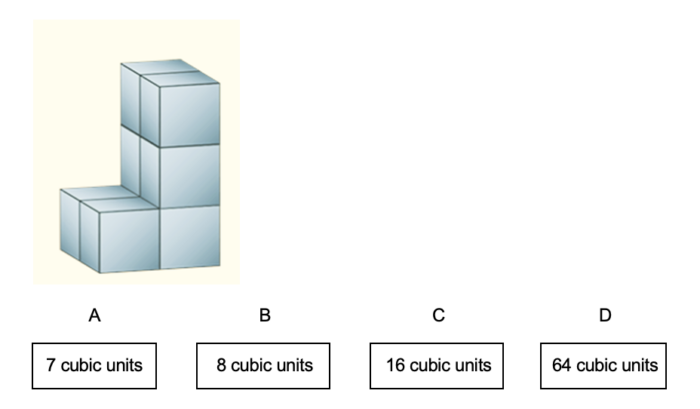The NWEA MAP Test measures student growth and academic achievement, providing valuable insights for parents, teachers, and students. This guide will help you understand how the test works, what to expect, and how to prepare effectively.
You’ll discover:
Boost your child’s success with a clear understanding of the exam and proven preparation strategies. Let’s get started!

Hey there! Do you have a question about the test or our practice package? Email me at roman@staggingapps.website. I'm here to help your child succeed!
The MAP (Measures of Academic Progress) Test from NWEA is a computer-adaptive assessment that evaluates a student’s academic growth and achievement over time.
Used by schools across the United States and internationally, the test provides valuable insights for educators and parents to better support each student’s learning journey.
In addition to tracking growth, the MAP Test is a helpful tool for identifying students who may qualify for gifted programs.
The MAP Test measures a student’s knowledge and skills in core subjects like math, reading, language usage, and, in some cases, science. Its primary objectives include:
The detailed insights offered by the MAP Test allow educators and parents to ensure students receive the right level of challenge and support.
A standout feature of the MAP Test is its adaptive design, which customizes the testing experience for each student:
This dynamic approach ensures the test captures an accurate picture of the student’s current abilities, whether they’re excelling, performing at grade level, or needing additional support.
For students showing advanced capabilities, the test helps highlight the potential for gifted programs by presenting them with above-grade-level challenges.
The test is administered to students from kindergarten through 12th grade. It’s used in public, private, and charter schools, and by homeschooling families worldwide to assess:
The test is suitable for a wide range of learners. This includes advanced students, those needing additional academic support, and homeschoolers seeking a reliable way to evaluate academic progress.
If you’re a homeschooling parent, check out our MAP Testing for Homeschoolers page for tailored information and resources to help your child succeed.
Its versatility makes it a valuable tool for education professionals, parents, and homeschooling families alike.
The exam is a powerful tool that helps schools monitor student progress and make informed decisions about instruction. Its ability to provide detailed, actionable data makes it an essential resource for educators and parents.
This evaluation is designed to measure student growth over time, not just their proficiency at a single moment. Here’s how it supports growth:
This growth-focused approach helps students stay on track and build confidence in their abilities.
Sidenote: If you’re a teacher and want to get helpful resources to support your students, visit our NWEA MAP Teacher’s Resources Guide.
The MAP Test provides valuable data that benefits both educators and parents:
The data bridges the gap between home and school, ensuring everyone involved in a child’s education is informed and aligned.
Schools use MAP Test results in multiple ways to enhance learning outcomes:
It is more than just a diagnostic tool—it’s a resource for continuous improvement, helping schools provide the best possible education for their students.
This test provides an adaptive and personalized experience, making it different from many traditional assessments. Understanding its structure and format will help you guide your child toward effective preparation.
The NWEA MAP is computer-based and conducted in schools or remotely, depending on the institution’s guidelines. Here’s how the administration works:
The flexible administration process allows schools to schedule the test multiple times a year to track progress.
The NWEA Test evaluates students in core academic areas, though the specific subjects depend on grade level.
MAP Math Test:
Topics include number sense, algebra, geometry, and data interpretation. Questions range from basic arithmetic to problem-solving tasks that challenge critical thinking skills.
What is the volume of the given figure expressed in cubic units?

Answer: B
Count how many unit cubes are present in the figure. There are 8 cubes in total.
1 cubic unit x 8 = 8 cubic units
Thus, the volume of the given figure is 8 cubic units.
MAP Reading Test:
This section assesses comprehension, vocabulary, and literary analysis. Students may encounter passages followed by questions about themes, details, and context clues.
Read the story.
Two friends, a rabbit and a hedgehog, were walking through the woods when they heard a wolf howling nearby. The rabbit immediately ran to a nearby burrow to hide, leaving the hedgehog out in the open. The hedgehog, unable to run fast, curled up into a tight ball, hoping the wolf would ignore him. When the wolf arrived, it sniffed at the hedgehog but decided to move on, uninterested. After the danger had passed, the rabbit came out of the burrow and said, “I was so scared! Are you okay?” The hedgehog replied, “I am fine, but next time, let us see if you remember to help your friends in need.”
What is the moral of this story?
A. It is important to act quickly in dangerous situations.
B. True friends stand by each other during times of trouble.
C. Always stay near a safe hiding place in the woods.
D. Danger brings out the worst in everyone.
In the story, the rabbit runs away, leaving the hedgehog to face the wolf alone. The hedgehog’s response implies disappointment in the rabbit’s behavior, highlighting that a true friend would stay and help rather than abandon someone in need.
Therefore, the correct answer is B. True friends stand by each other during times of trouble.
MAP Language Usage Test:
Students demonstrate their grammar, writing, and editing skills. Topics include punctuation, sentence structure, and word usage.
Which sentence is incorrectly punctuated with a comma?
A. My sister, who lives in Florida, is coming to visit next week.
B. Please, leave your shoes by the door.
C. We bought apples, oranges, and bananas at the market.
D. He went to the store, and bought some milk.
Answer: D.
Explanation: “He went to the store, and bought some milk” is incorrectly punctuated because the comma before “and” is unnecessary when there are only two items or actions in the sentence.
A) “My sister, who lives in Florida, is coming to visit next week”. This is punctuated correctly with commas around the non-restrictive clause.
B) “Please, leave your shoes by the door”. This is also correct, as the comma adds emphasis to “please.”
C) “We bought apples, oranges, and bananas at the market”. The use of the Oxford comma is correct here.
MAP Science Test (if applicable):
In some grades, students are tested on scientific concepts such as life sciences, physical sciences, and earth sciences. Questions focus on understanding principles and applying knowledge.
What force is helping the boy move down the slide?

A. Friction
B. Gravity
C. Magnetism
D. Push
Correct Answer: B. Gravity
Gravity is a natural force that pulls objects toward the Earth. In this scenario, the boy is sliding down due to the pull of gravity.
The slide is slanted, so gravity helps him move downward.
Friction is the force that slows down his motion as his body and the slide surface come into contact.
Magnetism does not apply here because there are no magnetic objects involved.
Finally, “push” refers to an external force, which is not necessary for the boy to slide down since gravity is already at work.
The MAP test does not have strict time limits, giving students the flexibility to work at their own pace. On average:
This format reduces stress and allows for a more accurate assessment of a student’s abilities.
The Measures of Academic Progress Test features a variety of question formats, including:
These diverse formats engage students and assess a wide range of skills.
The MAP Test adapts not only within a single testing session but also across grade levels:
This flexibility makes the test a valuable tool for tracking progress across a wide age range.
Preparing for the test doesn’t have to be stressful. With the right approach, students can build confidence, improve their skills, and achieve success.
Practicing with sample questions is one of the most effective ways to prepare for the MAP Test.
To make the most of preparation time, students should:
Accessing quality resources is key to effective test preparation.
GiftedReady will soon offer practice tests for the MAP test for Kindergarten and Grades 1 to 8. Stay tuned!
Avoid these common pitfalls to ensure productive test preparation:
Skipping Practice Tests: Not practicing with sample questions can lead to surprises on test day.
This test stands out among standardized tests for its adaptive nature, growth-focused approach, and personalized insights. While other assessments may measure similar skills, the MAP Test takes a unique approach to evaluating and supporting student learning.
By offering a personalized, growth-oriented testing experience, the test provides unique value that sets it apart from other assessments. Its adaptability, focus on actionable insights, and student-friendly design make it a key tool for educators and families alike.
The evaluation uses a scoring system that measures both academic performance and growth over time.
This evaluation uses RIT scores, a unique scale that measures a student’s academic knowledge and growth. These scores are consistent across grade levels, making it easy to track progress over time.
Each subject has specific score ranges that provide insights into a student’s performance. RIT scores help identify strengths, areas for improvement, and readiness for more advanced material.
The test includes normative data that compares a student’s performance to their peers nationwide. Percentiles show where a student ranks in relation to others in the same grade.
The results measure growth and proficiency. By comparing scores from multiple test sessions, you can track your child’s progress over time.
For an in-depth explanation of these topics, visit our NWEA MAP Test Scores page to learn more.
It is a powerful tool for tailoring education to each student’s unique needs. Its detailed results and adaptive design make it ideal for supporting diverse learners and creating personalized learning experiences.
The test provides actionable insights that help educators develop Individualized Education Plans (IEPs) for students.
By leveraging MAP Test data, schools can create effective plans that empower students to succeed academically.
The adaptive nature of the MAP Test ensures that every student is assessed at their appropriate level, making it especially valuable for both advanced and struggling learners:
This personalized approach ensures that all learners receive the support they need to reach their full potential.
Excelling in this adaptive test involves more than just academic knowledge—it requires thoughtful strategies, focus, and preparation. Here are practical tips to help students perform their best.
Using the right approach during the assessment can make a significant impact:
Although this test isn’t timed, pacing yourself helps maintain focus:
A calm mindset is key to maximizing performance:
For younger students, extra preparation and encouragement go a long way:

Sharpening your child's skills with lifelike practice for gifted tests and school exams.
© 2025 GiftedReady | HTML Sitemap